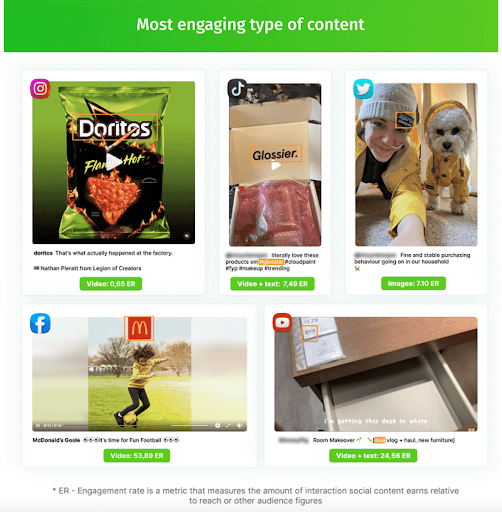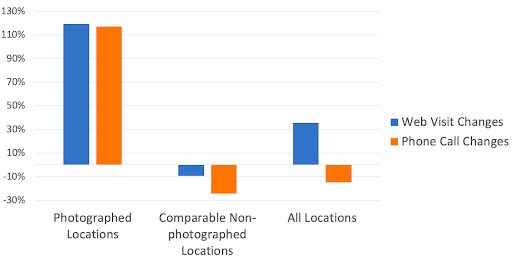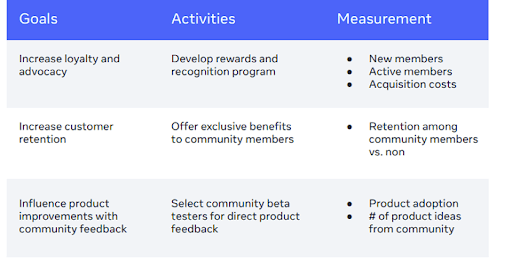The TikTok Search Revolution: How Gen Z is Transforming Online Discovery
Local Memo: Social Media Trends Revealed in Billion-Post Study
In this week’s update, learn about social media trends as revealed in a new billion-post study; images as a conversion factor in local search; getting started with Google product listings; how to build engaged online communities; the lack of correlation between hashtags and Instagram reach; and LinkedIn’s losing battle against web scraping.
Social Media Trends Revealed in Billion-Post Study
A new study from YouScan looks at the characteristics of one billion social media posts from 2021. Covering major platforms including Facebook, Instagram, TikTok, YouTube, and Twitter, the study focuses particular attention on consumer engagement with brands. Here are some highlights:
- Politics is the most commonly discussed topic on social media, followed by gaming and health
- On all platforms except Twitter, the most engaging type of content is video; on Twitter, photos are the most engaging
- Fashion and food & drink are the most popular industries on social networks, with Zaful and Red Bull taking top positions in each category; Fenty Beauty leads in cosmetics and Lego leads in entertainment
- Instagram has the highest proportion of posts with positive sentiment, followed by TikTok and then Facebook; only Twitter has more negative than positive content
- The most frequently displayed brand logos in user posts include Mercedes-Benz, Apple, and Nike

Video and images drive the most social engagement, courtesy YouScan
How Images Boost Local Conversion
Speaking of the power of visual media, Mike Blumenthal has published the third installment in a three-part series on Near Media about the rise of visual search in local. Blumenthal argues that images have become increasingly important for driving conversion in local searches.
He cites two case studies to prove the point. The second is especially dramatic: professionally shot photos for a law firm resulted in a lift of 119% in website visits and 117% in phone calls, with both metrics actually decreasing for firm locations that were not photographed.
Blumenthal reminds us that Google includes photos in its recommendations for ranking well in local search results, and that photo optimization has been demonstrated to have a positive impact on the organic ranking of websites. Recent feature launches such as “Find places through photos” show Google moving ever closer toward an image-first interface for local. The post offers a great deal of practical advice for businesses including what kinds of photos to take, how often to add new photo content, and what to about user generated photos in your business profiles.

Year-over-year lift in actions for a law firm adding professional photos, courtesy Mike Blumenthal
Getting Started with Google Product Listings
Jason J. Zotara has published a helpful guide on Search Engine Journal that offers advice to businesses who want to get started with free product listings on Google. The guide is especially pertinent for businesses operating locally, given that product search has become increasingly localized by Google in recent months.
Zotara explains that free product listings uploaded to the Merchant Center are eligible for display in Google Search, Google Images, and Google Lens. Free listings fall into two categories, standard and enhanced, with the more detailed enhanced listings being the only type eligible to appear in the Shopping tab. Product listings that appear in interfaces like Google Images are shoppable, meaning that they contain purchase information and link users to the merchant website.
Any merchant can get started with free product listings by creating a Merchant Center account and uploading inventory. Platforms like Shopify also offer seamless integration with Google product feeds.

Product listing in Google Search, courtesy Search Engine Journal
Meta Offers Guidelines to Brands for Building Online Groups
Meta has published a new “Communities for Brands Playbook” to help brands create engaging online communities, with a focus on Facebook groups. Meta says that brands have found success creating communities around goals such as “customer support, product innovation, loyalty and engagement, customer acquisition, or retention.” The guide encourages brands to build communities with clear goals and incentives for members, as well as defined and measurable business outcomes. Tips include developing a rewards program for loyal members, offering benefits exclusive to the community, and providing early access to new features and products. As brands are increasingly challenged to reach audiences through traditional social posts, they may find community building offers a viable alternative path to consumer engagement.

Excerpt from Meta’s Communities for Brands Playbook, courtesy Social Media Today
More Hashtags Don’t Lead to Greater Reach on Instagram
New research from SocialInsider concludes that the number of hashtags in an Instagram post has no correlation with its reach. The study looked at 75 million Instagram posts from 2021 and 2022, finding that the highest impression rates (3.4%) were earned by posts with only 3 to 4 hashtags. Surprisingly, impressions actually decrease as hashtag count goes up. There are some variations by audience size; for accounts with midsize audiences of 10,000 to 50,000 followers, the optimal number of hashtags appears to be 5 to 6. But the main takeaway is that hashtags, though they can increase the visibility of a post in search, will tend to backfire if overused, and so should be highly targeted and relevant.

LinkedIn Loses Ground in Data Scraping Case
The Ninth Circuit Court of Appeals has ruled against LinkedIn in the latest chapter of an ongoing legal saga, where the company is attempting to restrict access to its platform by hiQ, a company that scrapes LinkedIn profiles in order to analyze the likelihood that an employee is about to quit. LinkedIn, like many publishers, wants to prevent its site from being scraped by anyone, believing its content is proprietary; but the latest court ruling upholds the conclusion that scraping publicly available data does not violate the Computer Fraud and Abuse Act. This was the finding first reached in 2019 by the Appeals Court, which at the time also found that publicly available user data could be scraped without regard to the users’ rights.
Meta is also engaged in legal action against data scraping, also in relation to the gathering of user data, this time by companies that build browser extensions designed to gather user information from Facebook, Instagram, and other sites. While web scraping has long been upheld as legal in the courts, the collection of personally identifiable user data has come under tremendous scrutiny in recent years, so it would not be surprising if user data as a target of web scraping were to be regulated as a special case in the future.




